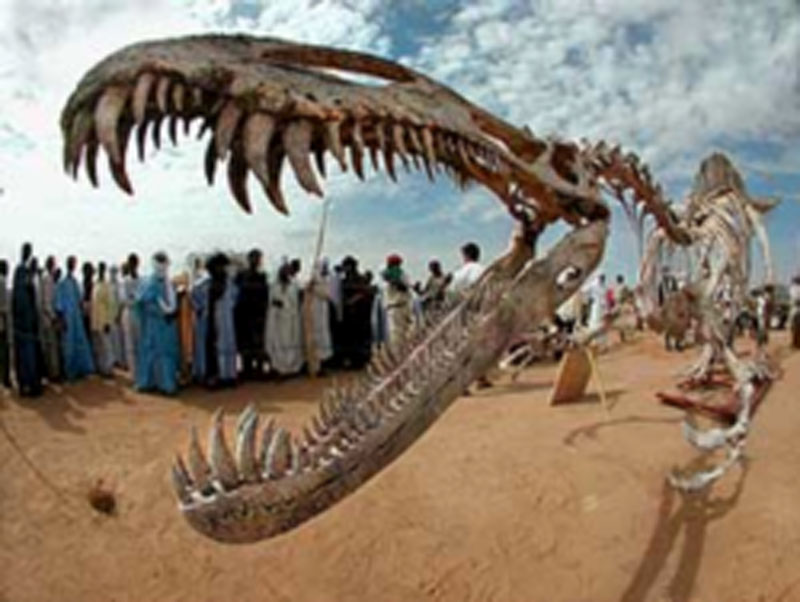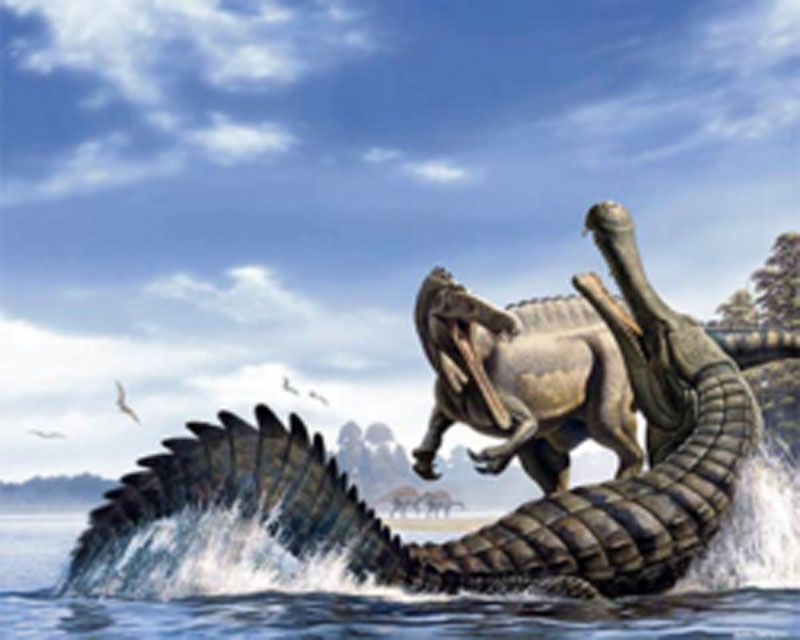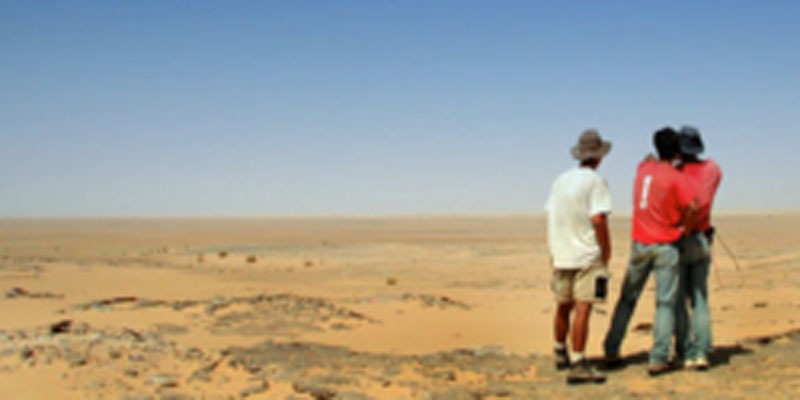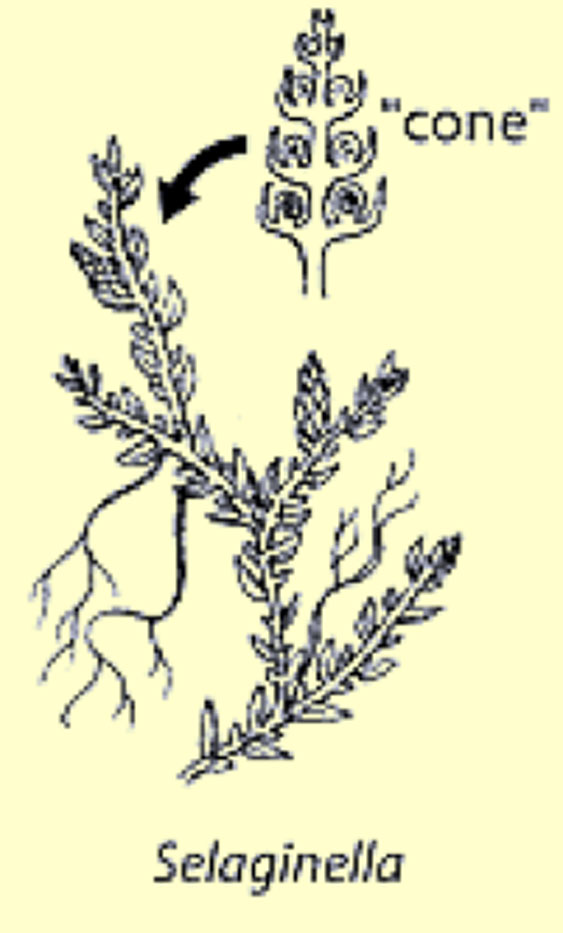More Info on Nigersaurus
Nigersaurus lived 110 million years ago in what is now Niger, West Africa. Although the fossils were found in the Sahara Desert, when Nigersaurus lived the area was a floodplain with wide rivers, conifer forests and lush vegetation. Nigersaurus lived with a menagerie of unusual dinosaurs, crocodilians and flying reptiles, as well as fish, turtles, and snakes.
Large predatory dinosaurs living at that time include: Suchomimus, a fish-eating spinosaur, the short-snouted Kryptops, and Eocarcharia. Other plant eaters include:Ouranosaurus, a duck-billed leaf-eater; Lurdosaurus, a common spike-thumbed iguanodont, and a titanosaurian sauropod larger than Nigersaurus.
The edge of the water was no refuge with crocodilians like the 40-foot-long SuperCroc (Sarcosuchus) waiting to ambush prey. The much smaller crocs, Anatosuchus (‘duck croc’) and Araripesuchus were hunting as well.
Even the skies were occupied – long-winged flying pterosaurs swooped overhead, sometimes diving down to snatch a tasty fish out of the river.
Only by bringing together plants from around the globe and a variety of modern environments can a dinosaur-age scene be recreated. Some of the plants, like ginkgos, look virtually the same as their extinct ancestors; some, like the conifer Araucaria, were the dominant trees of the forests 110 million years ago. Plant groups alive at the time of the dinosaurs include mosses, horsetails, ferns, tree ferns, cycads, ginkgos, conifers, palms, blooming water lilies and magnolias.
Early land plants inhabited a hot, humid environment. 300 million years ago, many land areas were covered in wet forests of giant clubmoss, horsetails and ferns. These seedless plants reproduce with spores, which require humid environments to survive.
Clubmoss and Horsetails
Horsetails (Equisetum) have a central, hollow stem with whorls of leaves or thin branches. They hold their spores in a cigar-shaped “cone” at the top of the plant. Horsetails date back to ~370 million years ago. During the beginning of the dinosaur era they grew to be nearly 30 feet tall (10m.)
Ferns live in a wide range of environments. They have large leaves (fronds), which are made up of several smaller segments (pinnae). Ferns produce spores on the undersides of their fronds. Ferns date back ~370 million years ago.

Photo © M. Hettwer
Suchomimus

Illustration © R. Martin
Sarcosuchus and Suchomimus, pictured here, lived in the same world as Nigersaurus

Photo E. Vecchione – Fossilized Wood

Photo M. Hettwer Anatosuchus skull

Photo M. Hettwer – The team searches Gadoufaoua, a vast rocky plain for new discoveries

Horsetail

Equisetum, “Horsetail”

Clubmoss

Selaginella, "Clubmoss"

Fern